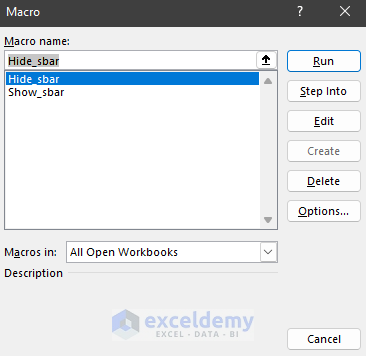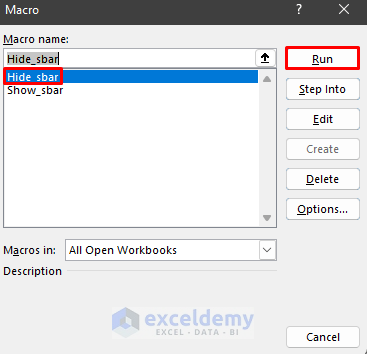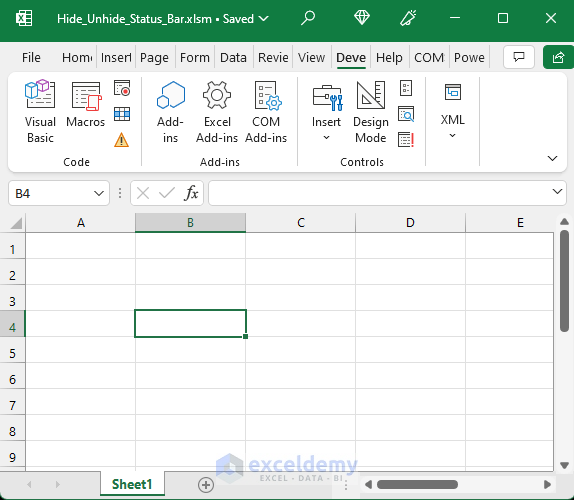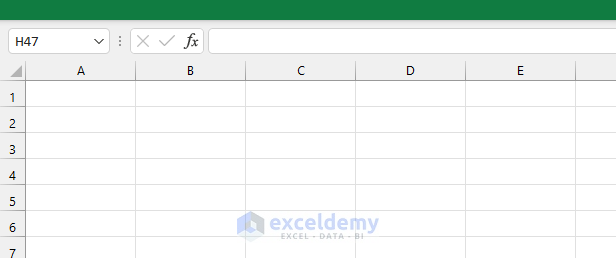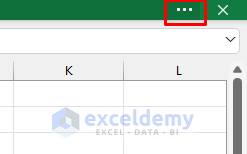The status bar in Excel serves as a dynamic interface element located at the bottom of the application window. It functions as a communication hub. The bar displays details ranging from the ready status of the application to specifics about the selected cells, such as counts, sums, and averages.
In this Excel tutorial, you will learn to hide and unhide the status bar.
The cause for hiding or unhiding the status bar in Excel mostly depends on the user’s preferences and specific needs. Mostly, users prefer to hide it for maximizing workspace and reducing distractions. Unhiding it shows summary and status information of data which can be a great help for users too.
Here is how the interface looks without any status bar.
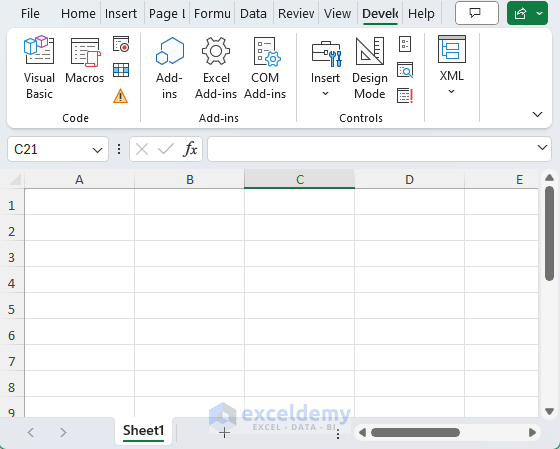
This is the view containing the status bar.
What Is Status Bar in Excel?
The status bar in Excel is the horizontal bar at the bottom of the window. It provides different useful information and shortcuts. You can modify the status bar information via mostly VBA and some built-in features.
The bar mostly consists of the cell mode indicator, worksheet view indicator, and zoom slider. It can contain other information such as accessibility status, macro recording status, fill handle options, etc. depending on the version and user settings.
2 Ways to Hide and Unhide Status Bar in Excel
If you truly want to hide/unhide the status bar, VBA is the way to go. However, different modes like full screen or focus mode can hide/unhide the status bar in Excel too.
You can hide and unhide the status bar in Excel, using these 2 methods:
Using VBA Code
You can use the Application.StatusBar property to display and hide information in the status bar. Setting this property to False or True hides and unhides the status bar.
You need to use the Developer tab to apply VBA codes in Excel. If you don’t see the tab, then you need to display the Developer tab on the ribbon in Excel.
To hide and unhide the status bar using VBA, follow these steps:
- Go to the Developer tab > Visual Basic.
- The VBA window will appear. Select Insert and then click on Module.
- Then copy this code and paste it into the module.
Sub Show_sbar() Application.DisplayStatusBar = True End Sub Sub Hide_sbar() Application.DisplayStatusBar = False End Sub - You need to save the Excel file using a macro-enabled extension or xlsm extension.
- Next, go back to the Excel interface and click on Macros in the Developer tab.
As a result, a panel will appear named Macro and it will contain 2 sub-functions to hide and unhide the status bar.
- Choose the desired macro by name and press on Run.
Within our code, Hide_sbar is the one for hiding the status bar and Show_sbar displays the bar.
The status bar will vanish/appear depending on the macro you have selected.
As we selected the Hide_sbar macro, the status bar is hidden in the figure below.
Toggling Between Full-Screen
The “Full Screen” of Excel offers the interface to provide a distraction-free and immersive working environment. It hides other Windows elements and some of the Excel elements. This includes the status bar.
The shortcut key to enter/exit the full screen is CTRL + Shift + F1. Pressing that will make both the ribbon and status bar disappear if you are entering the full screen.
The Excel window will look like this:
To find Ribbon in this mode, you can click the option on the top right corner of the Excel window.
You can press CTRL + Shift + F1 again to restore the previous interface.
Download Practice Workbook
You can download the practice workbook from here.
Conclusion
Hiding or unhiding the status bar in Excel is a common topic in Excel. You can use VBA for that purpose. Also, you can toggle between screens to show or hide the status bar in Excel. If you’re still having trouble with any of these methods, let us know in the comments. Our team is ready to answer all of your questions.
Frequently Asked Questions
What does ‘Ready’ on the status bar mean in Excel?
‘Ready’ is the cell mode status displayed in the status bar. It indicates the general mode of a cell. When you press Enter, the status goes to “Edit” indicating the cell is in edit mode now.
Can I customize the status bar to show specific information for my workbook?
Yes, you can customize the status bar in Excel. To access the default option, right-click on the status bar and select the option you want to display. For more detailed customization, you need VBA.
How do I switch between Page Layout view and Normal view using the status bar?
There are buttons available for Normal view, Page Layout view, and Page Break view in the status bar beside the zooming options. You can click on them to switch between these views.
Related Articles
- How to Copy Sum from Status Bar in Excel
- Excel Status Bar Not Showing Sum
- [Fixed!] Excel Status Bar Not Showing Count
<< Go Back to Status Bar in Excel | Excel Parts | Learn Excel
Get FREE Advanced Excel Exercises with Solutions!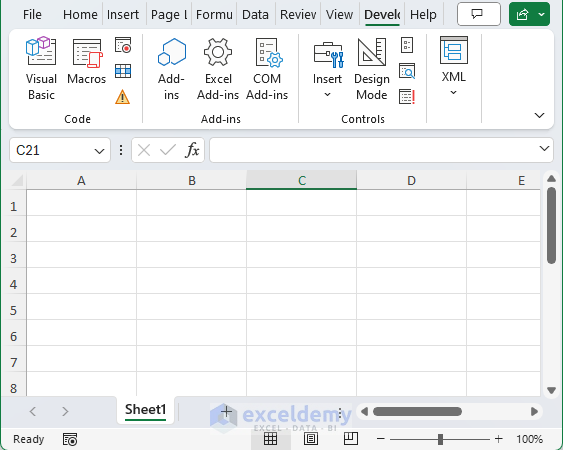
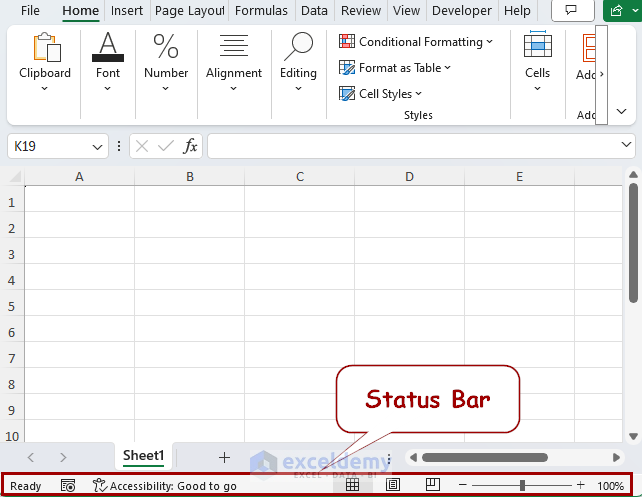


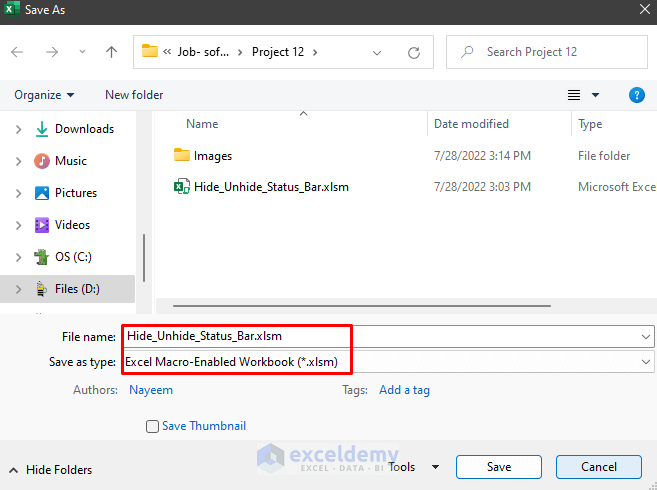
 As a result, a panel will appear named Macro and it will contain 2 sub-functions to hide and unhide the status bar.
As a result, a panel will appear named Macro and it will contain 2 sub-functions to hide and unhide the status bar.